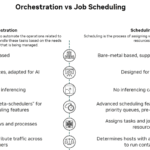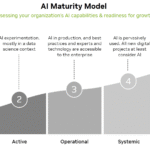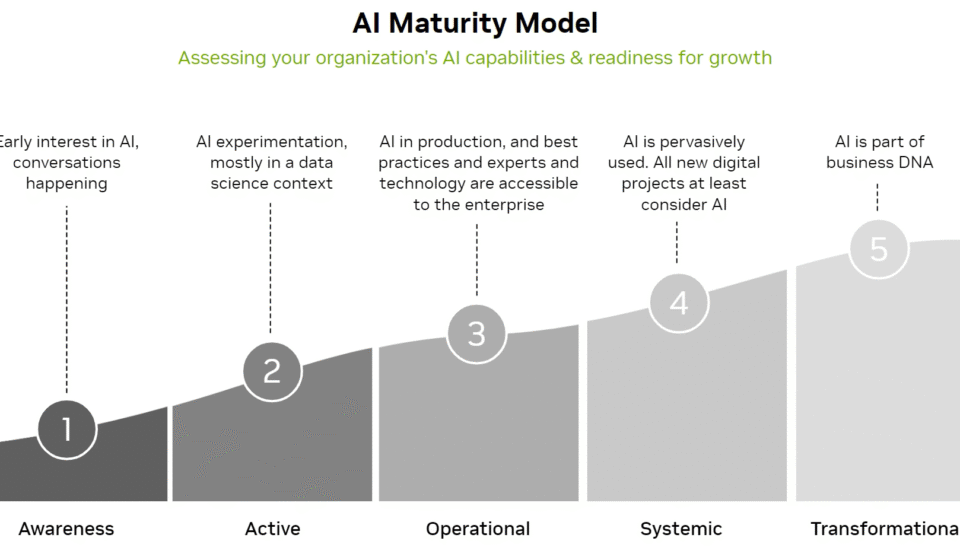
AI Maturity Model with Hybrid Approach for AI Model Deployment
The AI Maturity Model describes a journey from initial curiosity about AI to full integration where AI shapes the very essence of the business. Organizations can use this model to understand where they stand and plan their AI growth accordingly.
- Awareness Stage
- At this initial stage, the organization has an early interest in AI.
- Conversations about AI are starting to happen within the company.
- People are learning what AI is and exploring its potential benefits.
- However, there is no significant AI activity or projects yet; just curiosity and awareness.
- Active Stage
- The organization begins experimenting with AI, mostly within a data science context.
- This means teams are trying out AI techniques on data to see what works.
- These experiments help build understanding and identify useful AI applications.
- AI is still not widely deployed but is actively being tested and explored.
- Operational Stage
- AI moves into production, meaning AI solutions are actively used in business processes.
- Best practices, AI experts, and necessary technology become accessible across the enterprise.
- The organization has established frameworks and resources to support AI projects.
- AI is no longer experimental but part of regular operations.
- Systemic Stage
- AI is pervasively used throughout the organization.
- All new digital projects at least consider AI as part of their design and implementation.
- AI is integrated into many aspects of the business, influencing decision-making and workflows.
- The organization treats AI as a standard tool rather than a special initiative.
- Transformational Stage
- AI becomes part of the organization’s business DNA.
- It is deeply embedded in the culture, strategy, and operations.
- AI drives innovation and transformation across all areas of the business.
- The company continuously evolves with AI as a core element of its identity and competitive advantage.
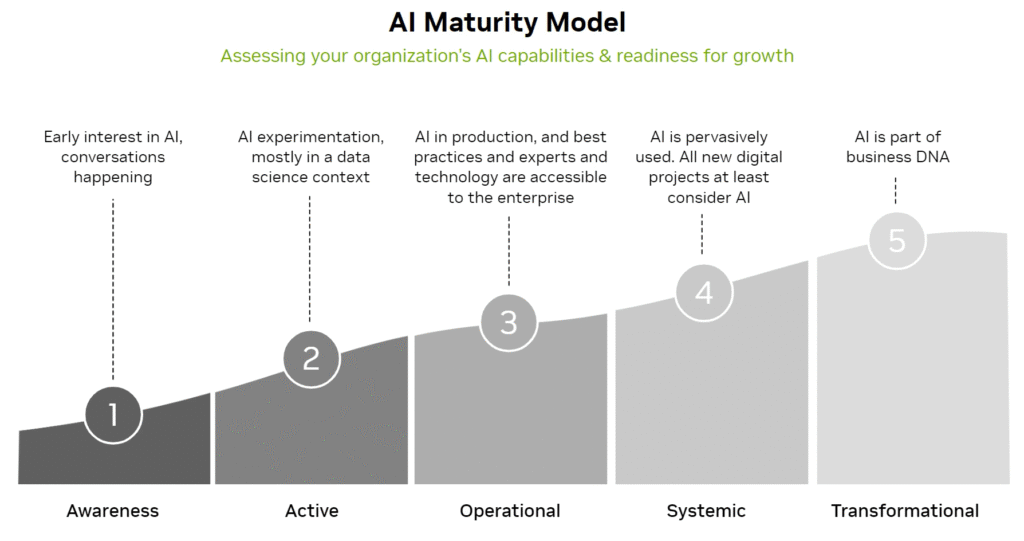
Leveraging a Hybrid Approach for AI Model Hosting and Running
As organizations progress through these maturity stages, especially from Operational onward, they can benefit from a hybrid approach to AI model deployment:
- Training, Customization, and Optimization On-Premises:
Organizations perform the heavy lifting of training AI models, customizing them to their specific needs, and optimizing performance within their own on-premises environments. This approach offers:- Full control over the training environment to tailor resources and security.
- Maintaining data sensitivity and compliance by keeping sensitive data on-premises.
- Data gravity alignment, meaning the data and compute resources are co-located to improve efficiency.
- Production Inference in the Cloud:
Once models are trained and optimized, they are deployed for inference (making predictions or decisions) at scale in the cloud. This allows organizations to leverage the cloud’s scalability, flexibility, and cost-effectiveness for running AI models in production.
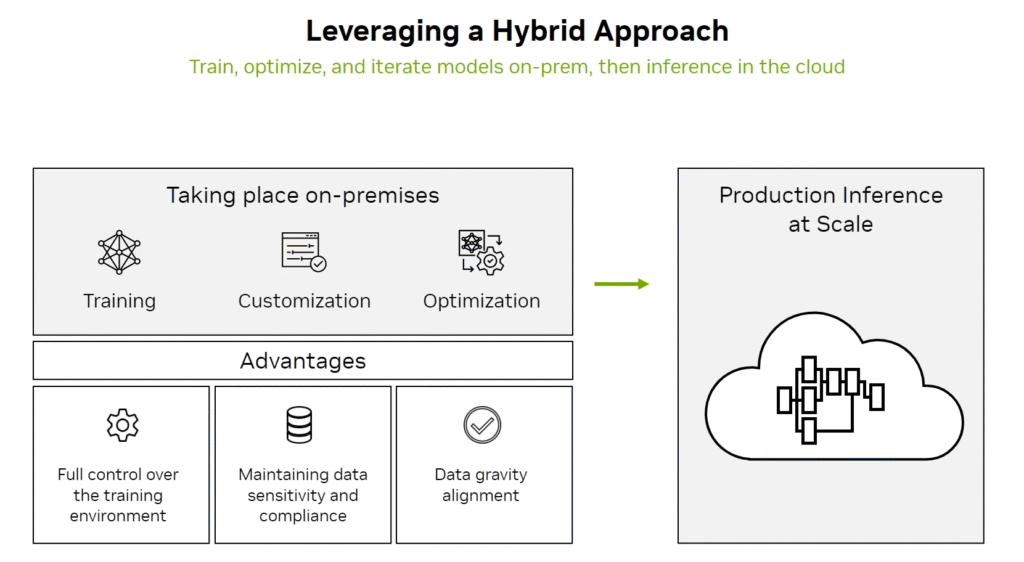
Comprehensive Understanding
By combining the AI Maturity Model with the hybrid hosting approach, organizations can strategically plan their AI adoption and deployment:
- In early stages (Awareness and Active), organizations focus on learning and experimentation, often with limited infrastructure needs.
- As they reach the Operational stage, they establish on-premises capabilities for training and optimizing models, ensuring control and compliance.
- Moving into Systemic and Transformational stages, they leverage cloud infrastructure for scalable production inference, enabling pervasive AI use and embedding AI deeply into business processes.
This hybrid approach balances control, security, and scalability, supporting organizations as they mature in their AI journey and maximize the value of their AI investments.
Image Source: NVIDIA



